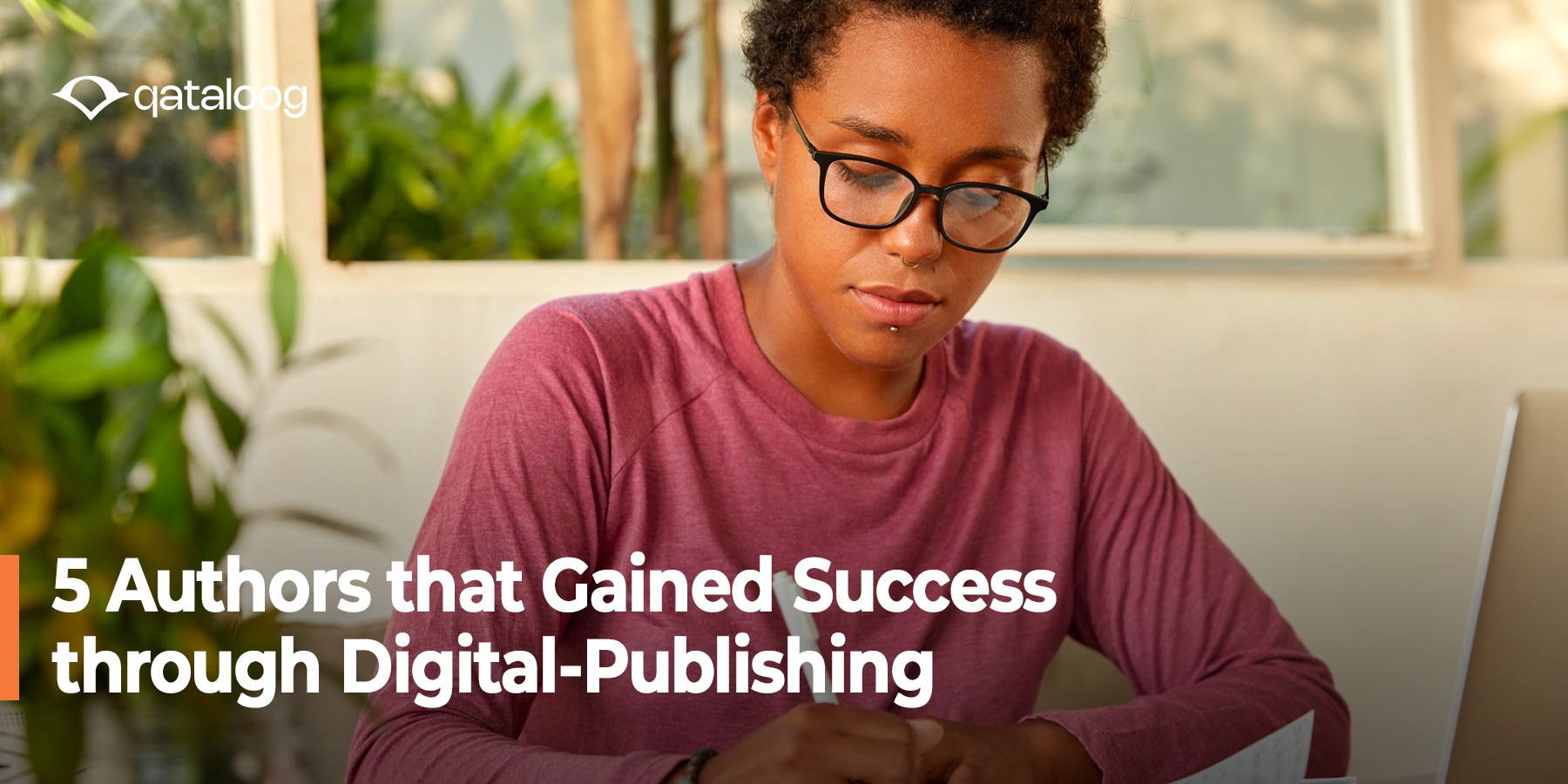
5 Authors that Gained Success through Digital-Publishing
The early days of digital publishing were marked by skepticism and cautious exploration. However, the rise of e-readers like Amazon's Kindle and platforms like Qataloog quickly transformed the landscape. These digital platforms offered an unprecedented level of accessibility and convenience for readers, while providing authors with direct access to publish and distribute their work. These changes had a profound impact on traditional publishing, challenging its long-held dominance.
Success Stories:
Andy Weir – "The Martian":
Andy Weir's journey to success is nothing short of inspirational. After facing rejections from traditional publishers, he turned to his blog to serialize "The Martian." The story's growing online popularity led him to self-publish on Amazon, where it became a sensation, eventually leading to a traditional publishing deal and a blockbuster movie adaptation.
E.L. James – "Fifty Shades of Grey":
E.L. James's path began with "Twilight" fan fiction posted online. She later reworked her story into an eBook and self-published it, leading to a global phenomenon, a series of bestsellers, and a successful film franchise. Her story is a great example of the power of online communities in helping an author's work to achieve great heights.
Hugh Howey – "Wool" Series:
Hugh Howey first introduced his "Wool" series to readers via Amazon’s Kindle Direct Publishing. His unique approach of retaining eBook rights while signing a print-only deal with a traditional publisher set a new precedent, creating a successful hybrid model of publishing.
Amanda Hocking – Paranormal Romance Novels:
Faced with traditional publishing rejections, Amanda Hocking turned to self-publishing on Amazon, rapidly gaining popularity with her paranormal romance novels. Her success story culminated in a multimillion-dollar deal with a traditional publisher, proving the viability of self-publishing as a route to mainstream success.
H.M. Ward – "The Arrangement" Series:
H.M. Ward's success in the new adult romance genre was fueled by her self-publishing strategy and savvy online marketing. Her "Arrangement" series not only garnered a massive following but also significantly impacted the genre and the business of digital publishing.
Analyzing Their Success:
These authors' successes weren't mere flukes; they were the result of key factors such as understanding their target audience, effectively leveraging online platforms for marketing, and the ability to quickly adapt to digital trends. Online communities and social media played pivotal roles in building fan bases and driving sales.
Challenges and Criticisms:
Despite the success stories, digital and self-publishing are not without challenges. Issues of quality control, market saturation, and the difficulty of standing out in a crowded digital space remain significant hurdles. Moreover, self-publishing has faced criticisms regarding its perceived lack of gatekeeping and quality assurance.
The Future of Publishing:
As we look to the future, digital and self-publishing are poised to evolve further, potentially integrating emerging technologies like AI-driven recommendations and virtual reality storytelling. While the impact on traditional publishing is undeniable, these platforms are likely to coexist, each serving different needs and preferences of authors and readers alike.
The stories of Andy Weir, E.L. James, Hugh Howey, Amanda Hocking, and H.M. Ward are examples of the evolving scope of publishing in the literary world. Their journeys underscore the growing acceptance and legitimacy of self-publishing. In this exciting new era, platforms like Qataloog are at the forefront, offering innovative ways for authors to publish, connect, and succeed. As we embrace the future of writing and publishing, one thing is clear: the story of literature continues to evolve in thrilling and unexpected ways.
